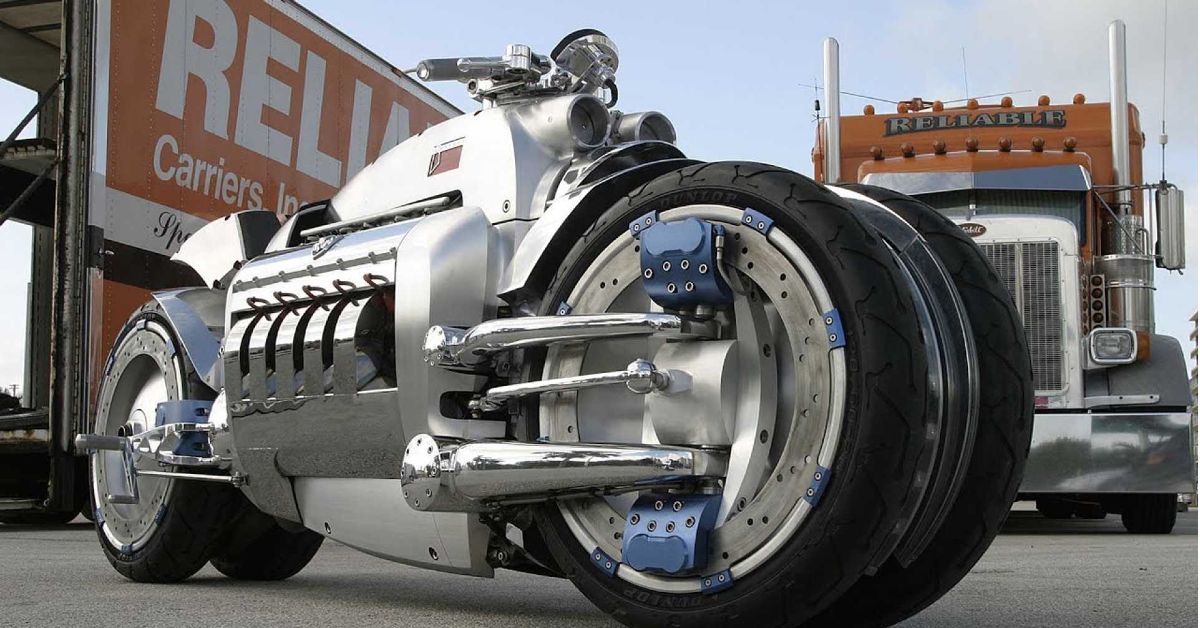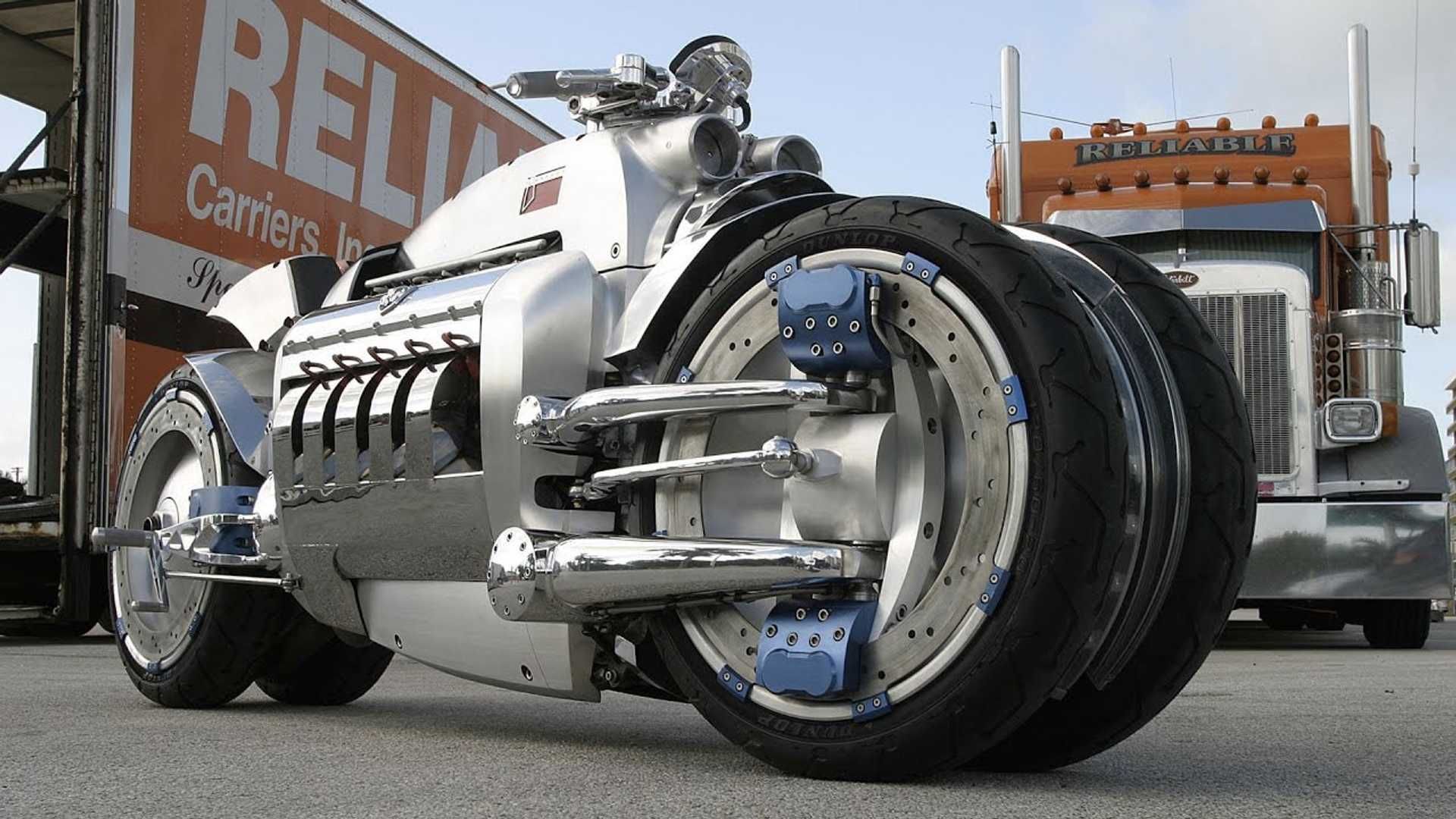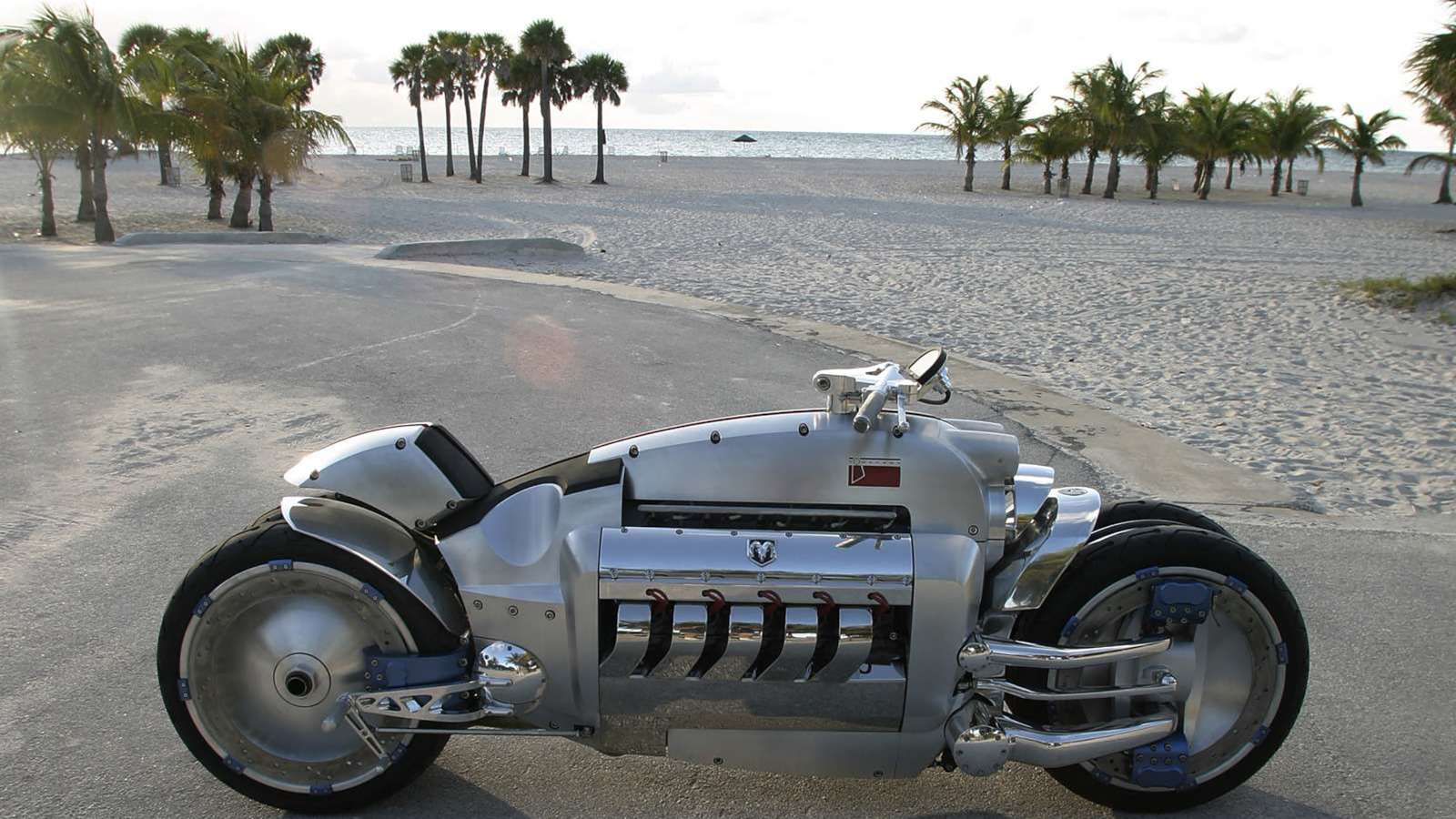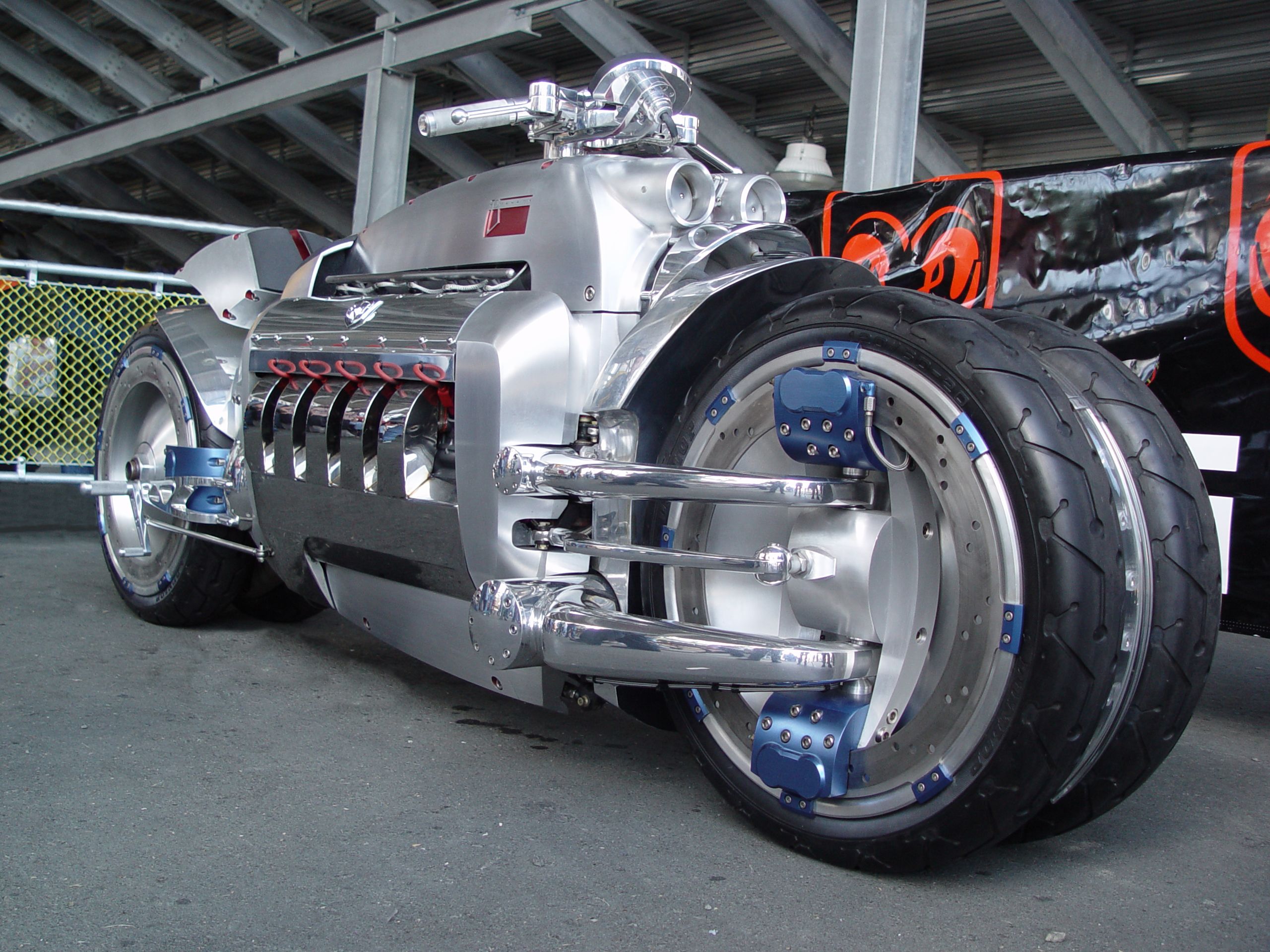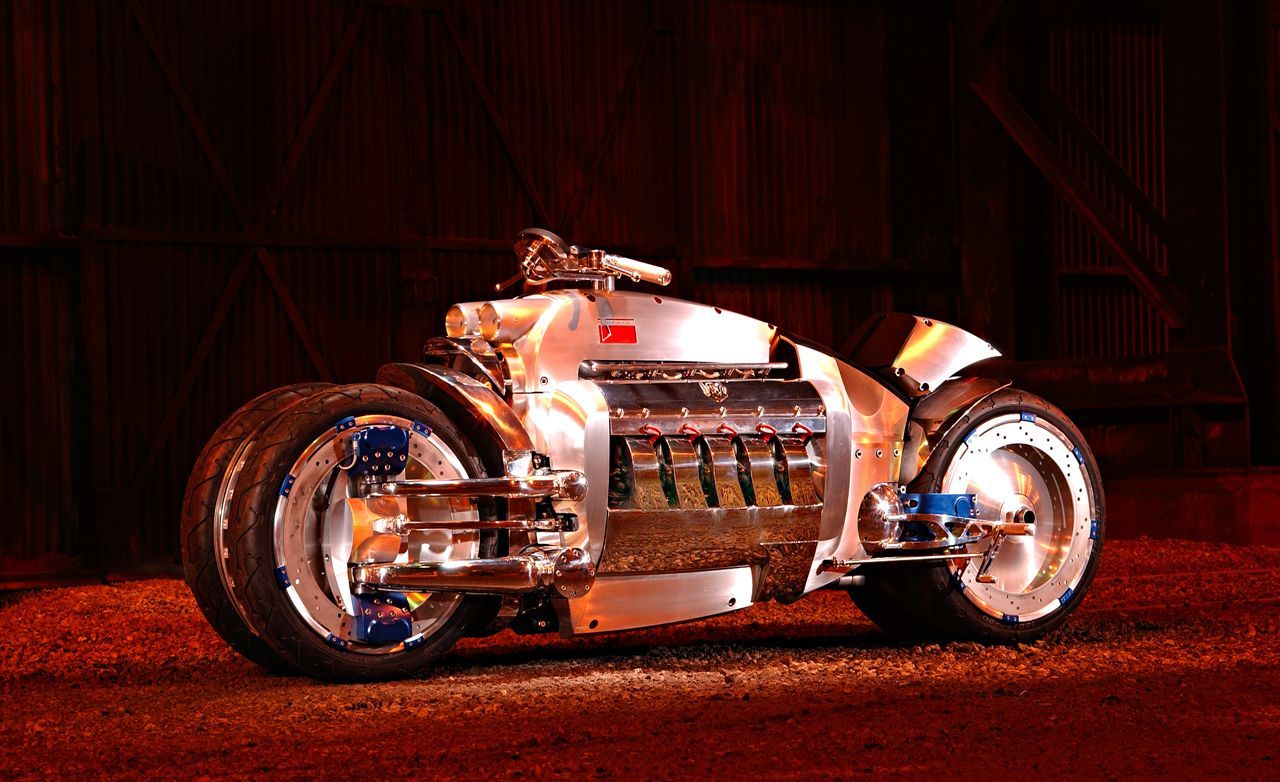The Dodge Tomahawk is a non–street legal concept vehicle that blurred the line between car and motorcycle. Only 10 were made in the span of four years after it was introduced by Dodge at the 2003 North American International Auto Show. It had an 8.3 L, 500 horsepower engine and it weighed 1,500 pounds. Thanks to its engaging and captivating design, the Tomahawk attracted significant press and industry attention.
Furthermore, its outsize-displacement, 10-cylinder car engine, and its four close-coupled wheels attracted additional attention from the press. It even came close to making it to full production as an official vehicle. The V10 SRT10 engine came courtesy of the Dodge Viper sports car. Critical reception was actually positive, despite the fact that the vehicle was not street legal, nor did it have any published road tests to its name. Its top speed was also never discovered or revealed, and many replicas were produced.
Read on to find out why the Dodge Tomahawk was remembered as ridiculous, impractical, and implausible, yet bold, ambitious, and captivating.
Replicas Were Made
Because the Tomahawk never made it to full production, only nine were produced by Dodge in any sort of official capacity. Although Dodge never manufactured more of this concept vehicle, Nieman Marcus sold nine replicas, offering them for $555,000 each. It is believed that they sold a total of nine at this price. Of course, like the official ones Dodge produced, none of the replicas were ever street legal.
Further, it's worth noting that Dodge is selling them as “rolling sculptures” as a way to legally declare they are not supposed to be driven and to absolve them of any legal liability should anyone illegally drive a Tomahawk on public roads. The Tomahawk has a Viper V-10, 500 horsepower engine with four wheels beneath it to handle its power, and it blurs the line between car and motorcycle. The engine breathes through twin throttle bodies mounted up front above the front tires.
Although it has the same number of tires as a car, it otherwise has a motorcycle body made of aluminum. The 10 official Tomahawk vehicles were manufactured at under $200,000 each, costing Chrysler more than $100,000 to build, not including engineering costs.
It Came Close To Production
Despite the fact that the Tomahawk is technically a concept vehicle, it came very close to full production. According to a confession from RM Motorsports president Bud Bennett, Chrysler told him that if he could find 20 serious buyers for the Tomahawk, they would finance the production of a hundred units. Ultimately, the company stepped down from the deal once the prospect of a lawsuit for injuries seemed highly likely.
Only four Dodge Tomahawks were actually hand-built by Bennett’s shop: one still in Chrysler’s possession, one in Bennett’s possession, and two sold off for half a million dollars to private buyers and rendered inert so they couldn't be driven. The Tomahawk is remembered as the brainchild of a muscle car company trying their hand at motorcycle production.
Rideapart.com even describes the Tomahawk as “a full-size engine block mounted on two swingarms attached to a set of double-tire wheels with a tiny saddle resting on the back wheel.” With the Tomahawk, the rider assumed a position where they needed to reach outfront for the handlebar while the feet were kicked backwards, which is easier said than done.
Dodge Calls It A “Rolling Sculpture”
As mentioned before, Dodge referred to the Tomahawk as a “Rolling Sculpture” to absolve themselves of any legal liability. While Dodge may not be making false claims about the Tomahawk, they made a hypothetical estimate of the possibilities, as the vehicle was never fully tested in every possible aspect. A lot of the claims made about the Tomahawk were based on the horsepower and gearing of the vehicle.
Dodge didn't just consider the Tomahawk a “Rolling Sculpture,” but they also treated it as such. They even went so far as to say it's not really intended to be ridden. Keep in mind that Dodge used the Tomahawk as a concept vehicle for the purpose of showcasing some really tremendous capabilities. That said, the price tag of $555,000 made it more of a museum piece and a novelty than a practical vehicle, as only a select few would have the desire and the budget to afford a Tomahawk.
Furthermore, Dodge’s true intention was to stimulate a media buzz, which would notify spectators and competitors across the globe that Dodge Chrysler is an ambitious and bold company, taking risks and chances with their vehicles.
Unknown Variables Arise
The Dodge Tomahawk is shrouded in mystery, as a lot of variables surrounded its manufacturing, debut, design, and performance. First of all, it was only made for four years from 2003 to 2006. The first concept was revealed at the North American International Auto Show in 2003.
Although the Dodge Tomahawk was not legal for street use and was never put into full production for sale to the public, it was considered sporty and extremely fast concept car that was highly desirable by a lot of people. Sadly, no version of it conformed to regulations for street use, and therefore, no published road tests were done on it, leading to a lot of speculation about its capabilities.
Dodge estimates that the Tomahawk could possibly achieve top speeds between 300 to 420 miles per hour, and it doesn't help that the Tomahawk blurs the lines between car and motorcycle.
Sources: allpar.com, rideapart.com, hiconsumption.com, moneyinc.com,

